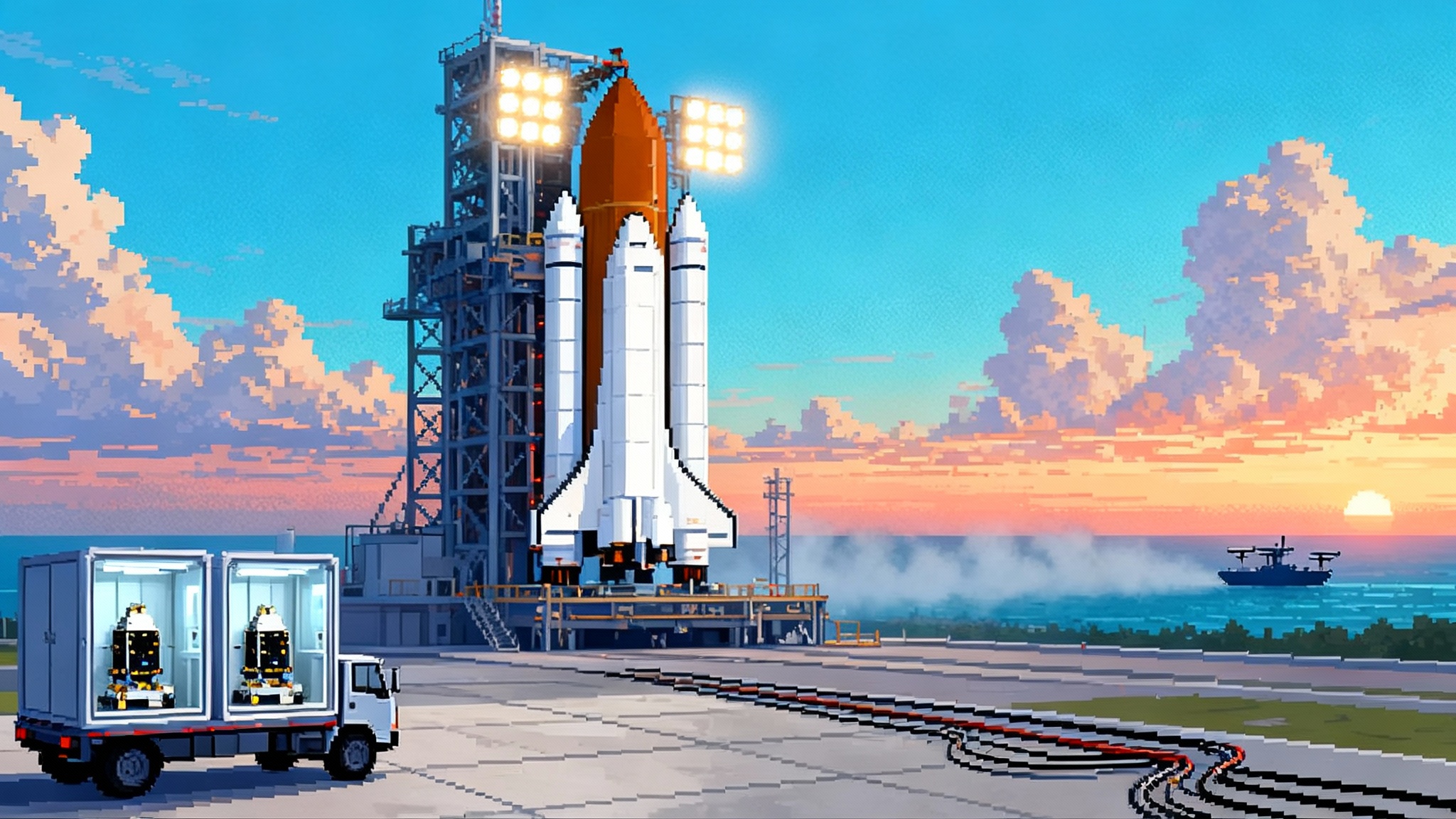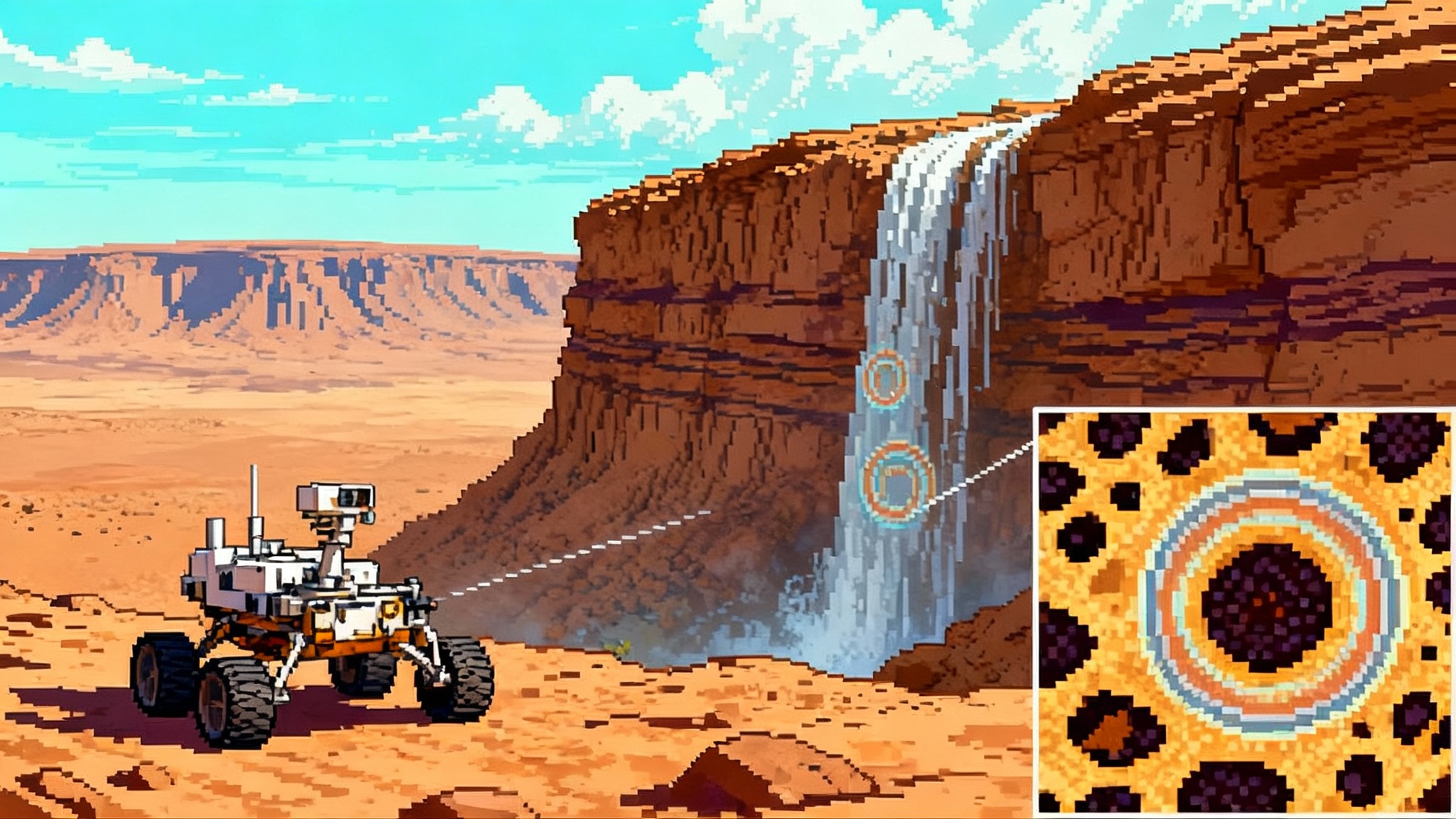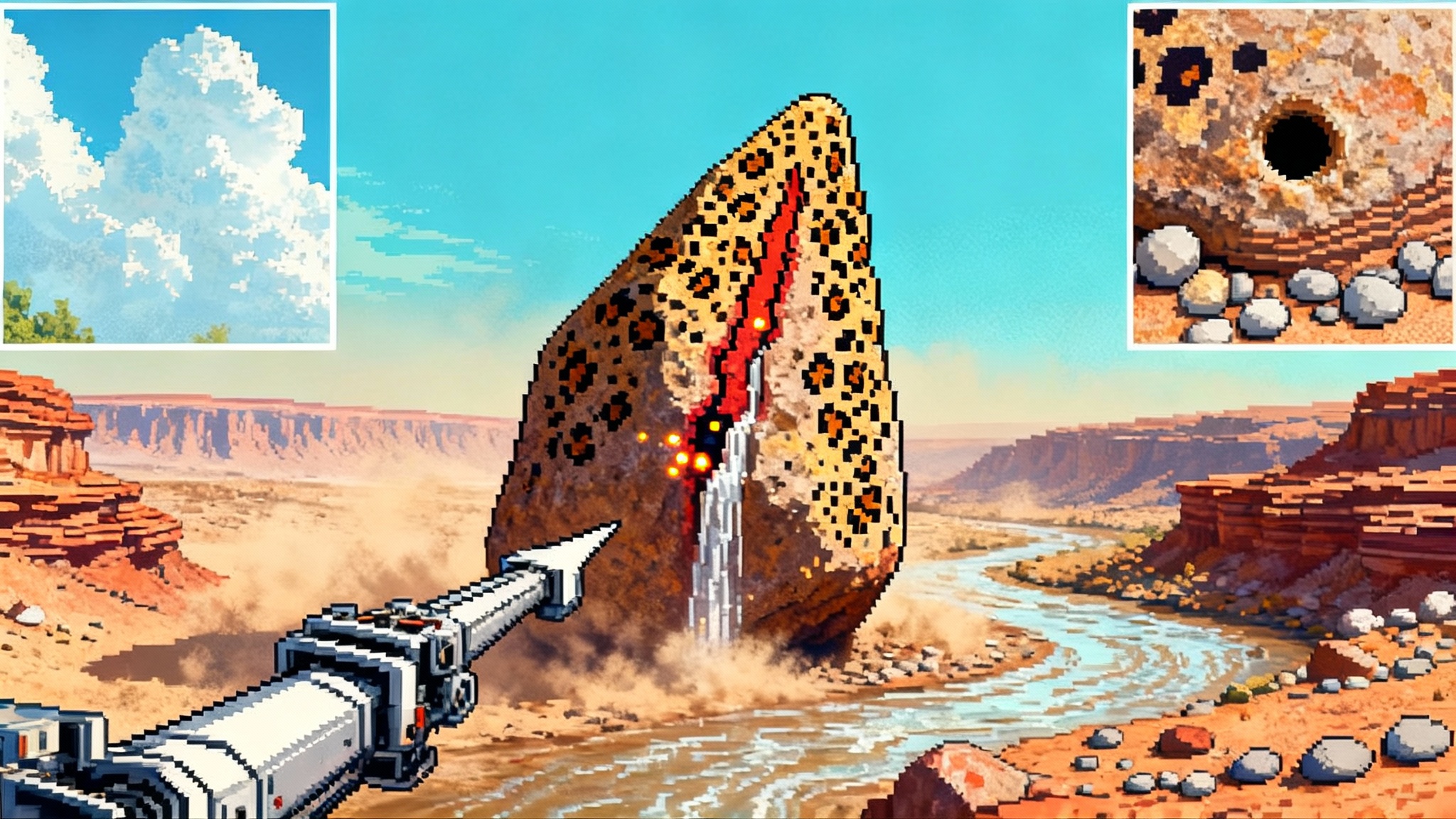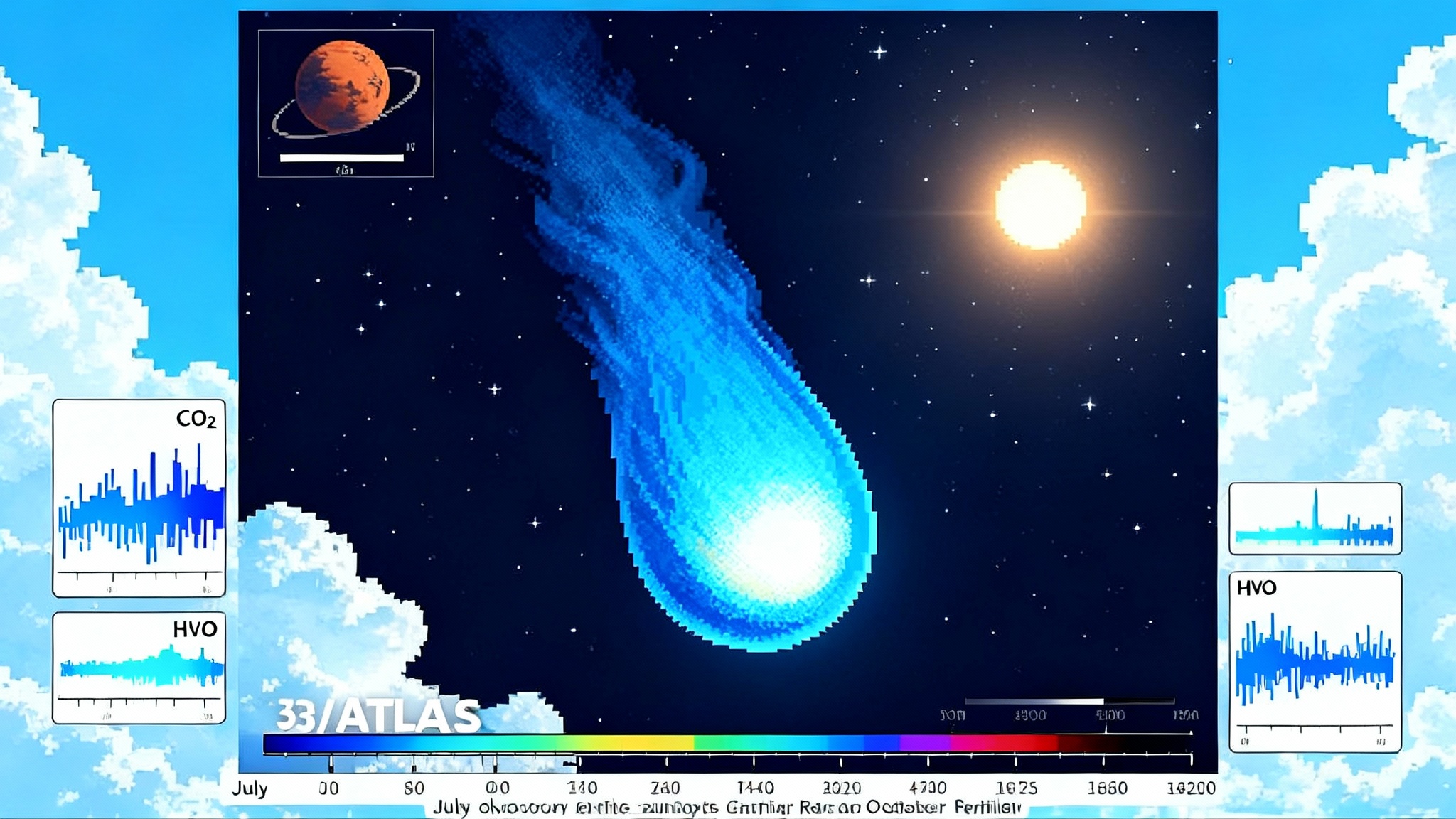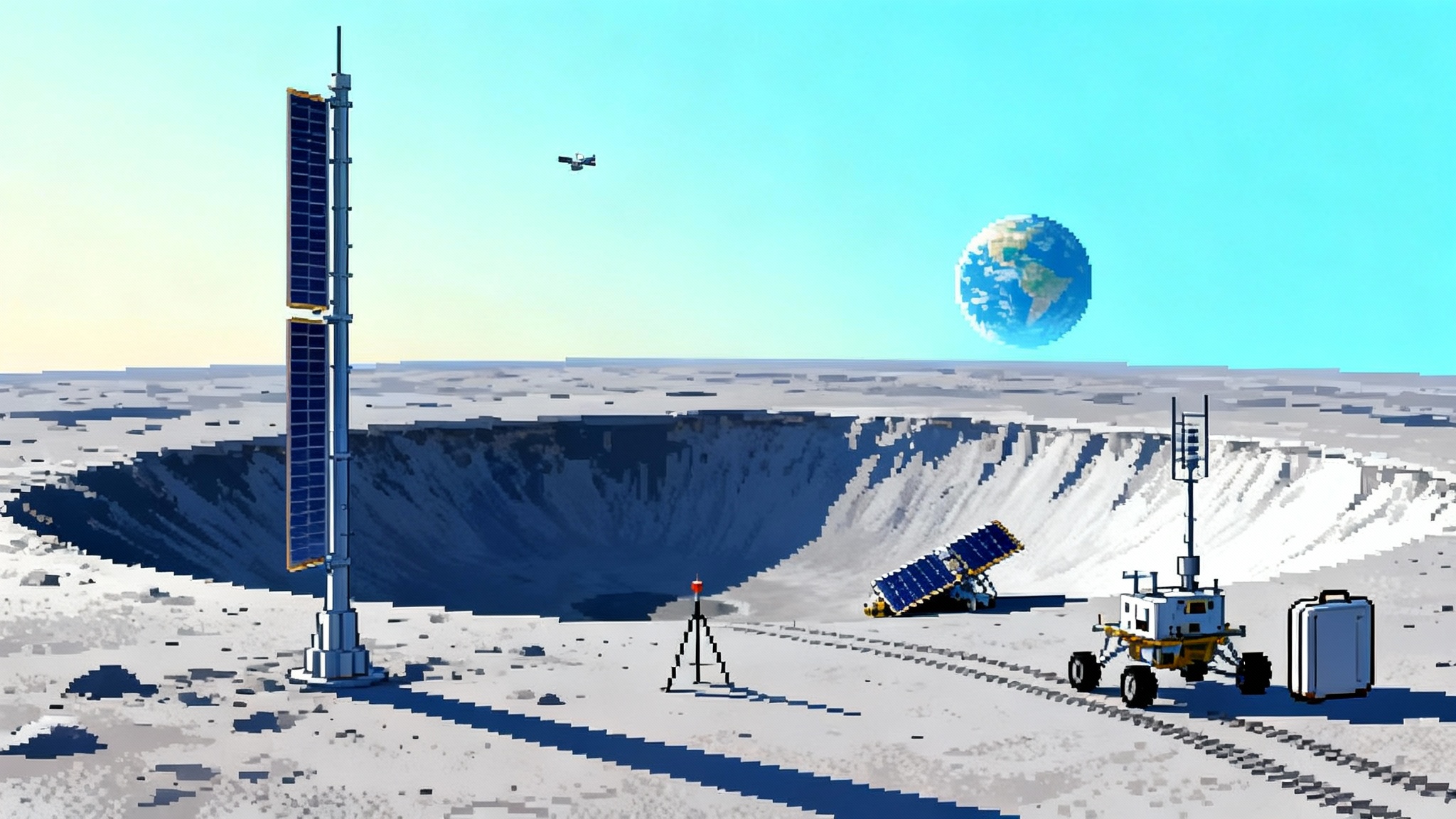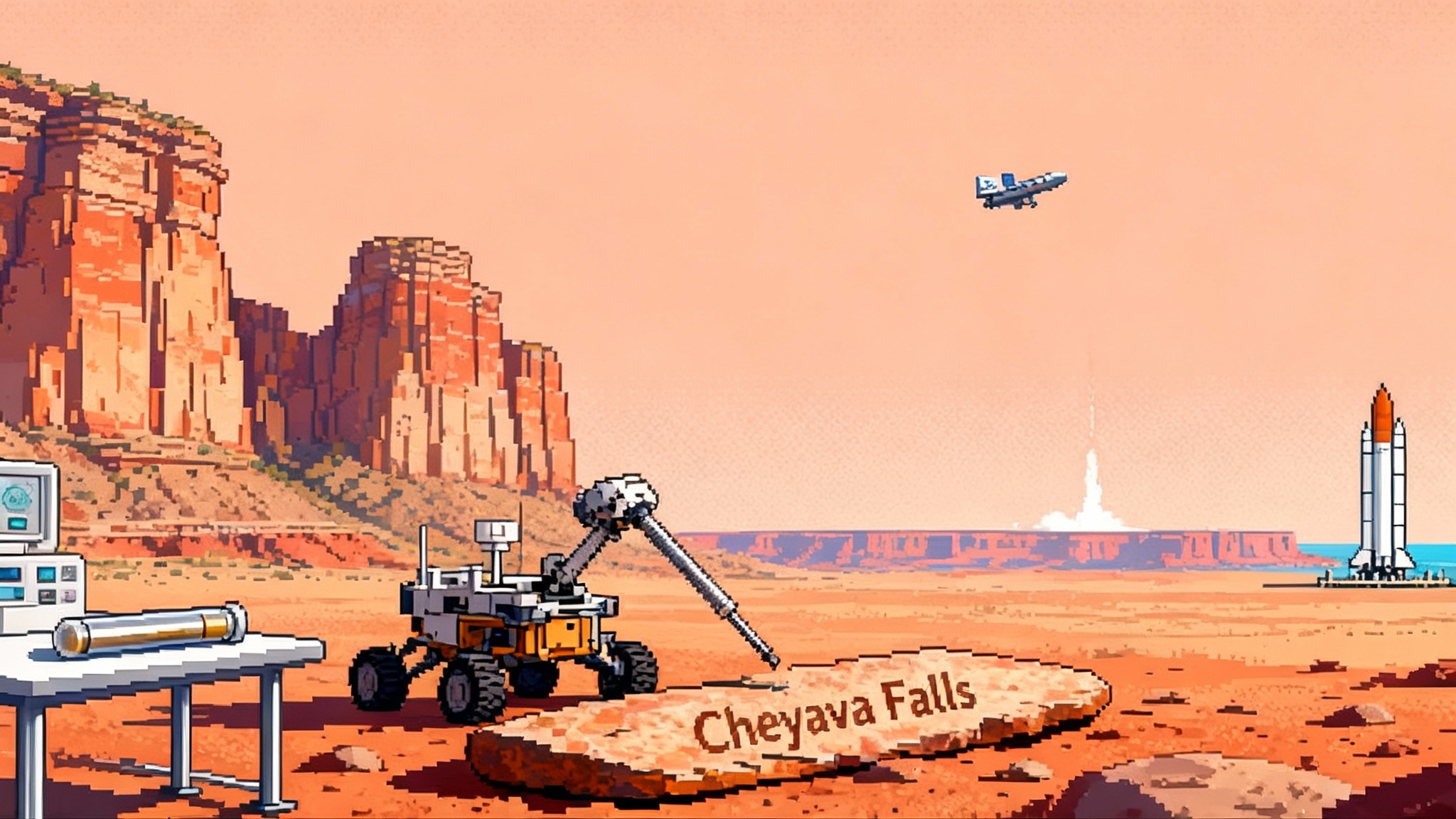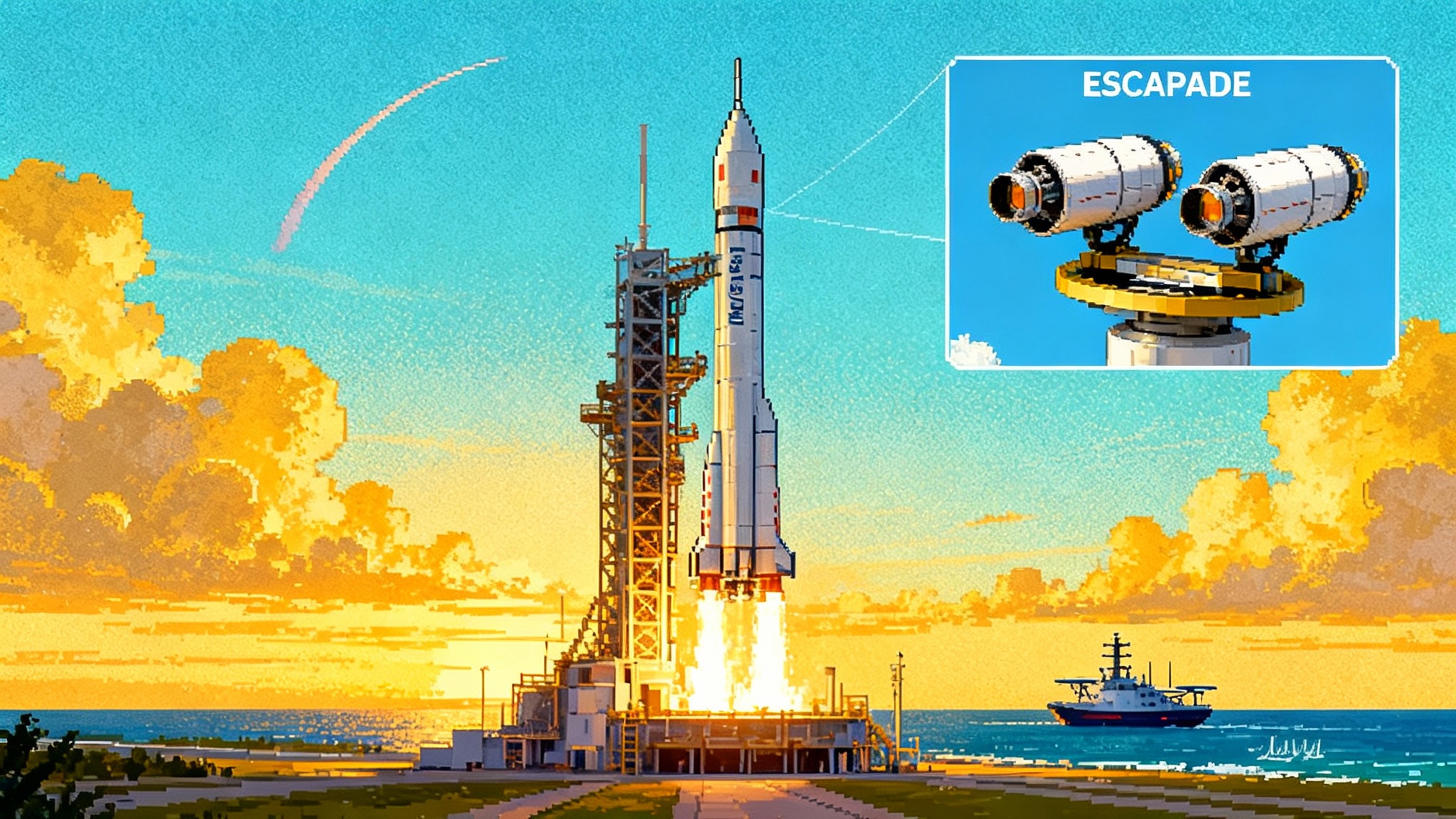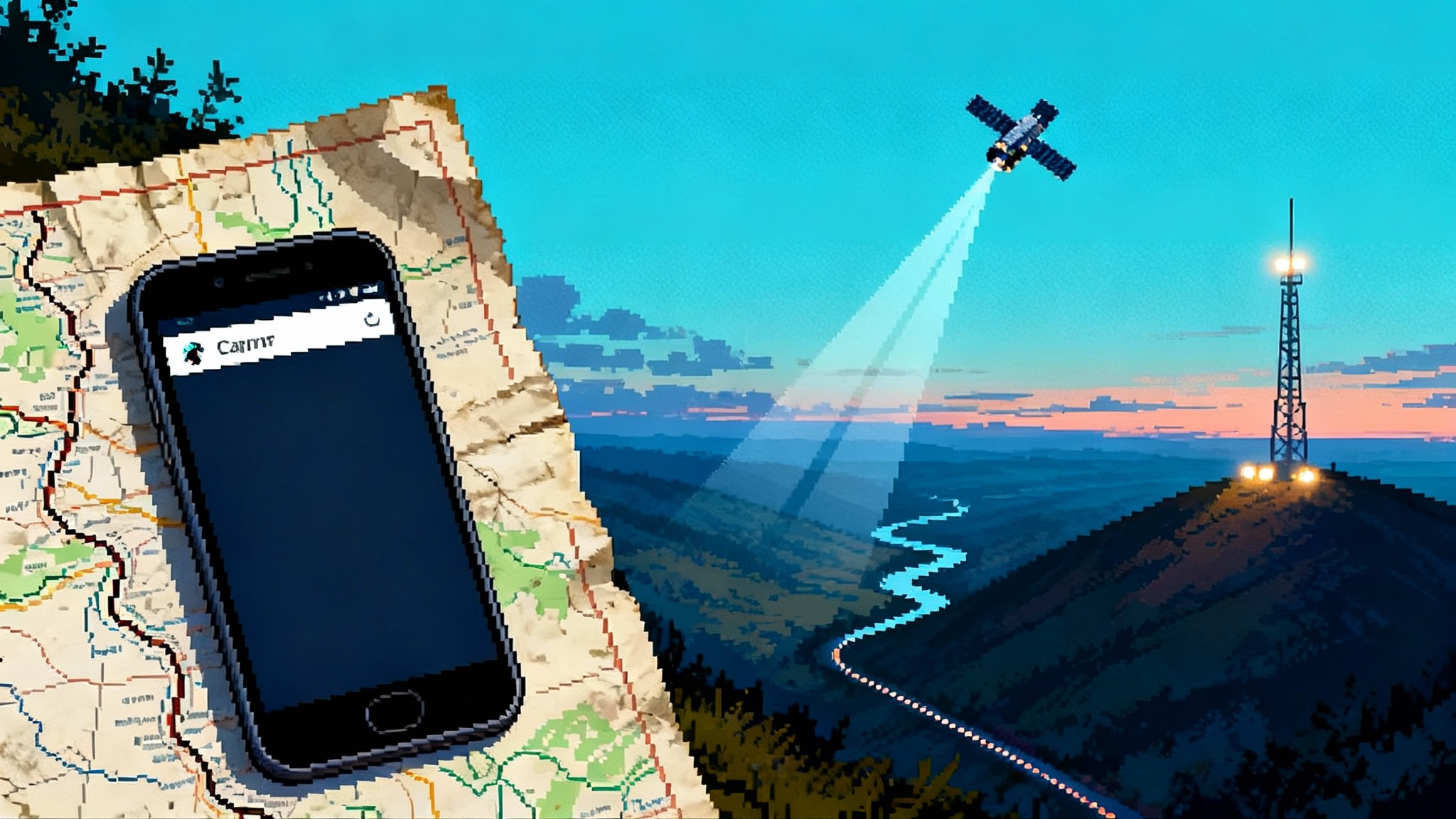Tianwen‑2 Sets Out to Sample Earth’s Mysterious Quasi‑Moon
China has launched Tianwen‑2 to Kamoʻoalewa, a tiny companion of Earth that might be a fragment of the Moon. The mission will try touch‑and‑go and anchoring‑drill sampling, with a target return in 2027 and big stakes for planetary defense.
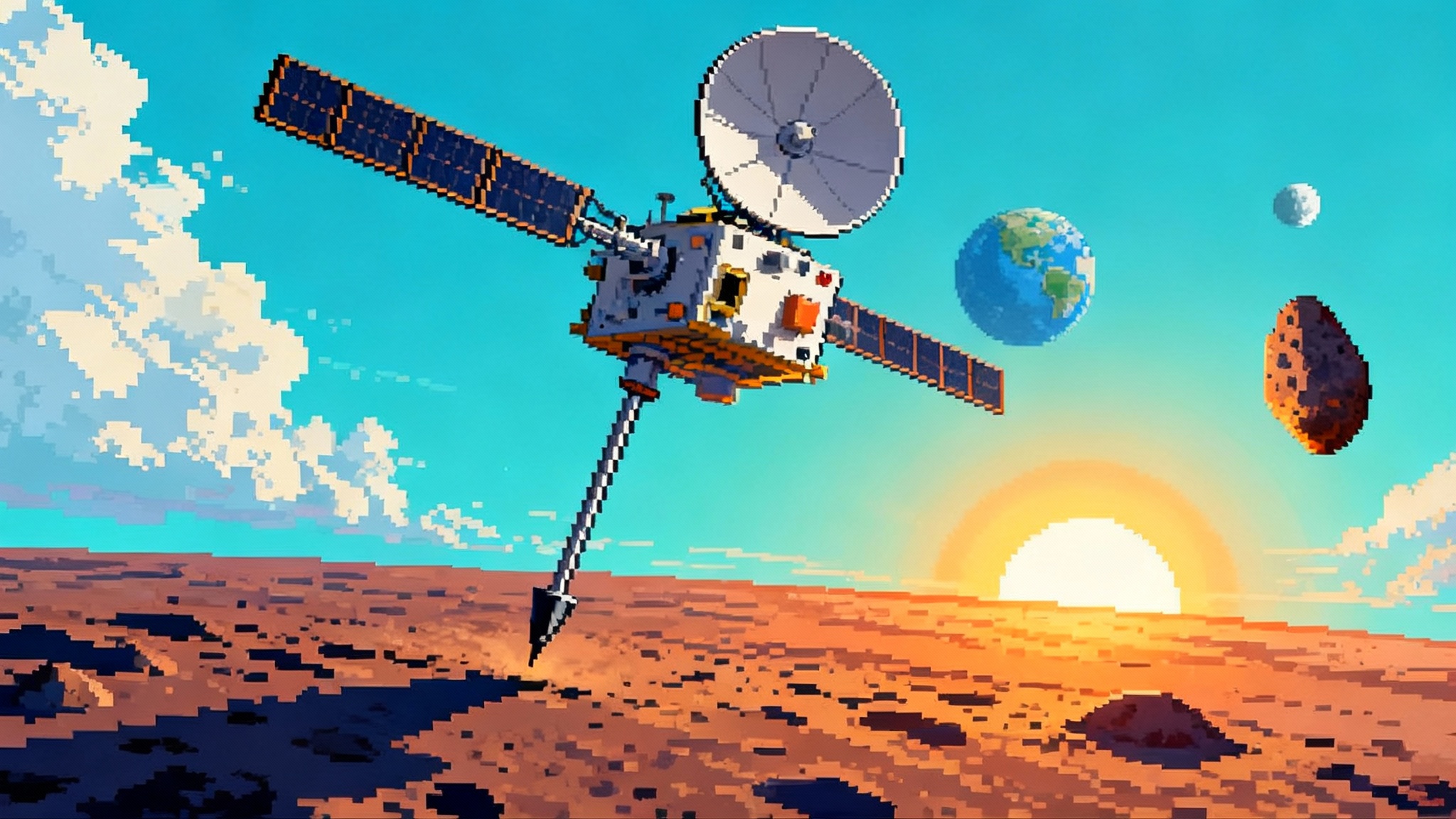
A new kind of sample return
China’s Tianwen‑2 is headed for one of the strangest addresses in near‑Earth space: Kamoʻoalewa, a small body that loops around the Sun in near‑lockstep with Earth and appears to circle us in a slow dance. The probe aims to grab pieces of this object and bring them home. If successful, it will be the first sample ever returned from an Earth co‑orbital. The mission launched on May 28, 2025 and is targeting arrival in mid‑2026, departure in April 2027, and a sample capsule landing on November 29, 2027, followed by an extended tour to main‑belt comet 311P/PANSTARRS. Those milestones, along with the team’s plan to combine touch‑and‑go with an anchoring‑drill method, are laid out in a clear timeline by observers following the mission closely at Sky & Telescope, which has become a go‑to reference for this flight’s evolving profile (Tianwen‑2 mission timeline).
Why this target, and why now? Because Kamoʻoalewa might not be a typical near‑Earth asteroid at all. Its orbit and spectrum hint that it could be a shard of our own Moon, launched into space by a massive impact, then dynamically shepherded into a rare co‑orbital state with Earth. A returned sample could settle that debate and open a new chapter in how we think about the population of objects that share our orbital neighborhood.
Meet Earth’s quasi‑moon
Kamoʻoalewa is small, roughly tens of meters across, fast‑spinning, and faint. In a Sun‑centered frame its orbital period is close to one year. In an Earth‑centered frame it traces a lopsided loop that keeps it near us for centuries at a time. These are the hallmark traits of a quasi‑satellite, a special class of co‑orbital bodies that are not gravitationally bound like the Moon but remain in a resonance with Earth’s motion.
For planetary scientists, that orbit is an opportunity. Co‑orbitals have low relative speeds compared with typical near‑Earth asteroids, which makes rendezvous and sample return more feasible than chasing an object on a wildly different path. For planetary defense planners, co‑orbitals are also a blind spot and a training ground. They can be hard to survey from Earth because of geometry and brightness, yet they move through the cislunar region that nations increasingly care about for communications, navigation, and security. A mission that characterizes one up close has value that goes beyond pure science.
Why Kamoʻoalewa might be lunar ejecta
Several threads point to a lunar origin. First, the dynamics: it shares Earth’s orbital neighborhood so closely that a source within the Earth‑Moon system is plausible. Second, spectra taken in 2021 show a reddish, silicate‑rich reflectance similar to space‑weathered lunar material rather than the signatures of ordinary S‑type asteroids. That analysis concluded that the best matches were lunar‑like silicates, raising the possibility that Kamoʻoalewa is literally a piece of the Moon that was excavated and lofted into a solar orbit. You can read the technical case in the 2021 study by Sharkey, Reddy, Malhotra and colleagues in Communications Earth & Environment, which compared the object’s spectrum with lunar samples and analogs (lunar‑like silicate material study).
How would that work physically? Hypervelocity impacts on the Moon routinely launch material. Most of it falls back, some becomes temporary Earth satellites, and a tiny fraction escapes the Earth‑Moon system. Numerical experiments show that a sliver of these fragments can be delivered into Earth co‑orbital configurations and transition between horseshoe and quasi‑satellite states for long periods. If Kamoʻoalewa is such a fragment, it would carry the mineralogy, isotopes, shock features, and space‑weathering history of lunar rocks, but seasoned by time in independent solar orbit.
A returned sample would test this decisively. Oxygen and titanium isotopes, mineral assemblages like plagioclase and pyroxene, glassy agglutinates from micrometeorite gardening, and exposure ages derived from cosmogenic nuclides could all point to a lunar or non‑lunar pedigree. If the grains show the nanophase iron typical of lunar regolith, that would be a strong clue. If they instead show the hydration or organics found on many carbon‑rich asteroids, that would argue against a lunar origin. Either way, the result reshapes our view of how Earth’s immediate neighborhood is populated.
What Tianwen‑2 will try that others did not
The mission blends several sampling strategies to handle uncertainty in surface properties:
- Touch‑and‑go: a brief contact to stir and ingest loose regolith, similar in spirit to what OSIRIS‑REx did at Bennu and Hayabusa2 did at Ryugu.
- Hover sampling: approach while matching the asteroid’s rotation, then ingest lofted material without a hard landing if terrain or spin complicates contact.
- Anchoring‑drill: physically attach to the surface with leg‑mounted drills, then core or scrape material for collection when cohesion or boulders defeat a simple touch‑and‑go.
That third option is the big swing. Anchoring on a microgravity target is mechanically difficult, and it introduces risks if the surface is weaker or stronger than expected. The payoff is access to more consolidated material and a better chance of sampling beneath the most weathered skin.
Tianwen‑2 also carries a small companion for proximity operations. A deployable element can scout and image during sampling, adding geometry and context that are essential for interpreting returned grains back on Earth. The goal is at least 100 grams of material, enough for a broad program of mineralogy, chemistry, and chronology with plenty reserved for future labs.
How it contrasts with OSIRIS‑REx and Hayabusa2
OSIRIS‑REx mastered precision navigation and a gas‑burst touch‑and‑go that swallowed surface material from Bennu in 2020, then delivered it to Utah in 2023. Bennu turned out to be a rubble pile with extremely low cohesion. That made landing tricky but ideal for the sampler, which sank in and scooped generously. Hayabusa2 at Ryugu executed two samplings, including a creative subsurface take where the team fired a small impactor to blast away weathered material before collecting nearby ejecta.
Tianwen‑2 inherits those lessons and adds redundancy for a different target class. Kamoʻoalewa may be more coherent than Bennu or Ryugu. It is much smaller, spins faster, and could have patches that are hard to penetrate. Touch‑and‑go might yield too little if grains are sintered or locked in place. Anchoring and drilling provide an alternative. If both methods work, the mission could return a stratified set of materials that sample different depths and microenvironments, a comparative data set neither OSIRIS‑REx nor Hayabusa2 could gather.
What the samples could actually tell us
- Origin test: Oxygen, titanium, and chromium isotopes are the classic fingerprints. Lunar rocks have tight ranges that differ from most meteorites. A match would be powerful evidence of lunar origin.
- Rock type and history: Are we looking at mare basalts, highland anorthosites, or something exotic? Shock veins, breccias, and glass beads would illuminate the violence of ejection.
- Space weathering clock: The thickness of vapor‑deposited rims and nanophase iron abundance reveal exposure duration on an airless surface. Comparing these with cosmic‑ray exposure ages tells us how long the grains spent on the Moon versus in heliocentric orbit.
- Volatiles and organics: Lunar regolith is dry, though it contains solar wind implanted species. Detection of hydrated minerals would push in the direction of an asteroidal origin, or of contamination acquired in space.
- Grain mechanics: Cohesion, porosity, and grain size distributions help model how the surface of a fast rotator evolves, which feeds back into sampling strategy for future small body missions.
Each finding would be valuable even if Kamoʻoalewa is not lunar. If it is a typical stony near‑Earth asteroid stranded in a co‑orbital niche, Tianwen‑2 would still give us the first ground truth on the surface physics of a quasi‑satellite. That improves our engineering playbook for operations in weak gravity and our scientific models of how sunlight, rotation, and impacts sculpt small bodies.
A window into Earth’s co‑orbital population
Kamoʻoalewa is likely not alone. Dynamical studies suggest a small but persistent population of Earth co‑orbitals that slip in and out of quasi‑satellite and horseshoe states on timescales of centuries to millennia. They are hard to find, small, and often masked by solar glare from our vantage point. A mission that constrains the density, spin state, surface texture, and regolith physics of one representative object lets us infer the broader population’s properties.
Why does that matter? Because co‑orbitals are the objects we are most likely to encounter in cislunar space, and because their orbits can evolve into Earth‑crossing paths under the push of solar radiation forces like Yarkovsky and YORP. Better thermophysical models, informed by actual material properties, sharpen hazard predictions and aid future deflection planning.
There is also a resource angle. Co‑orbitals are energetically accessible. If a subset carries useful volatiles or metals, they become candidates for technology demos in in‑situ resource utilization. Tianwen‑2’s navigation camera imagery, radar soundings, and sampling data will help assess how feasible it would be to anchor, drill, and process material on such bodies.
The cislunar strategy stakes
Cislunar space is becoming a strategic domain. Navigation satellites, communications relays, and space domain awareness sensors are moving beyond geosynchronous orbit toward the Earth‑Moon system. Co‑orbitals pass through that arena. Learning how to detect, track, and operate near them is directly relevant to safety and stewardship. The anchoring and hover techniques Tianwen‑2 will demonstrate are dual‑use in the broad sense: they apply to science, to debris remediation, and to future infrastructure maintenance in weak gravity.
Planetary defense also gains. A co‑orbital is a natural laboratory for practicing rendezvous with an object whose trajectory is close to Earth’s. The ability to characterize surface cohesion, boulder fields, and internal structure informs how kinetic impactors couple momentum or how anchoring systems might secure instruments for a deflection campaign. Even if Kamoʻoalewa is benign, the playbook Tianwen‑2 writes could be used in a hurry one day.
Milestones to watch on the road to 2027
- Cruise and instrument checkouts in 2025 and early 2026, with periodic image releases confirming spacecraft health and navigation performance.
- Rendezvous in early July 2026, then months of close operations to map the body, refine mass and gravity, and select sampling sites with stereo imaging and spectroscopy.
- First sampling attempt during the proximity operations phase once rotation and terrain are well constrained. If touch‑and‑go yields limited mass, expect the anchored approach to follow.
- Departure in late April 2027 once the sample canister is sealed and stowed for Earth return.
- Sample capsule release and atmospheric entry on November 29, 2027, with recovery teams staged for rapid transport to controlled curation labs.
- Extended mission onward to 311P/PANSTARRS, arriving in the mid‑2030s, using solar electric propulsion and the experience gained at Kamoʻoalewa to tackle a small body with comet‑like activity.
These dates reflect the best public timeline available today and will tighten as the probe nears its target. The key is that Tianwen‑2’s design bakes in margin and method diversity. It has more than one way to win.
If it is lunar, what then
A confirmed lunar fragment in a co‑orbital path would do more than solve a mystery. It would quantify the efficiency of Moon‑to‑space ejecta over recent geologic time. That updates models of how often Earth and the Moon swap material. It could even offer a sample from a region of the Moon we have never visited, if provenance points to a specific far‑side or highlands source.
If the sample looks lunar but shows subtle deviations in isotopes or mineral assemblages, we might have learned something new about heterogeneity in the lunar crust. If it looks asteroidal, we will have nailed down the surface physics of a fast, tiny co‑orbital and sharpened our picture of how such objects are supplied from the broader near‑Earth population.
A quiet revolution in small‑body exploration
In the last decade Japan returned samples from Ryugu, the United States returned samples from Bennu, and China returned samples from multiple lunar sites. Tianwen‑2 extends that progress into Earth’s co‑orbital zone and tries a technique set that future missions can adapt for even smaller, faster targets. It will also force a more complete census of Earth’s companions, because once we have ground truth from one quasi‑moon, astronomers will want to know how typical it is.
However the origin story of Kamoʻoalewa turns out, the act of returning material from an Earth companion is historic. It links lunar science, asteroid science, planetary defense, and cislunar policy in one compact package. That is why the next two years of quiet navigation and patient proximity operations matter. Somewhere out there a tiny world is carrying a clue about our Moon or about the small bodies that haunt our orbit. Tianwen‑2 is going to try to bring that clue back.
